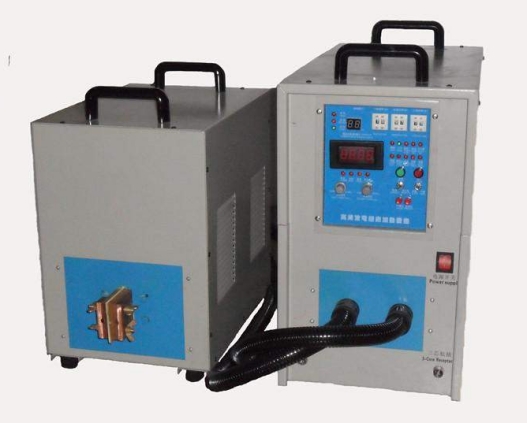- 11
- Jan
What is induction brazing?
What is induction brazing?
Induction brazing is heated by induction current, and the resistance heat of the workpiece through the induction current is the main heat source. During induction brazing, the part to be brazed is placed in an alternating magnetic field. The heating of this part of the base material is achieved by the resistance heat of the induced current generated in the alternating magnetic field. Since the heat is generated by itself, the heating speed is fast. The surface oxidation of the workpiece is less than that of brazing in the furnace, and the grain growth and recrystallization of the base material can be prevented, and the workpiece can be locally heated.
Induction brazing is widely used for brazing steel, stainless steel, copper and its alloys, high-temperature alloys, etc. It can be used for both soft brazing and hard brazing. It is mainly used for smaller workpieces, especially for workpieces with symmetrical shapes, such as tubular joints, flanges, shaft and disc connections, etc., and it is easy to realize automation and local rapid heating, which can be mass-produced.
The induction brazing equipment is mainly composed of AC power supply and induction coil, and there are some auxiliary fixtures for clamping and positioning. The frequency of AC power supply can be divided into power frequency, intermediate frequency and high frequency. Power frequency is rarely used for brazing, while intermediate frequency and high frequency are commonly used. The operating frequency of generators in the field of induction brazing is 100-450kHz. There are two ways to place the induction coil. One is to place it outside the container and rely on the inductor to heat the weldment. At this time, the container material is a conductor; the other is to place the induction coil in the container, and the weldment is directly heated by the induction coil. At this time, glass containers can often be used to facilitate observation of the brazing process.
The induction coil is a component that transmits induced current. It is designed according to specific joints, especially those with complex shapes. It is generally completed by experience and experimental methods. When parts with different sizes of brazing cross-sections are encountered, they can be combined. A basic design form to adjust the heating method. The induction coil must be heated quickly, uniformly, and with high efficiency. Generally, the induction coil is made of 4-12mm round or flat pure copper pipe. The pipe is cooled by water during operation. The thickness of the pipe wall should be less than the depth of current penetration, generally: 1~1.5mm. There should be a gap between the induction coil and the weldment to avoid short circuits, but in order to improve the heating efficiency, the gap between the induction coil and the weldment should be minimized. Induction brazing often requires some auxiliary tools to clamp and position the workpiece. In the design, the fixture parts adjacent to the induction coil should not be made of metal to avoid induction heating. The gap of induction brazed joints is usually 0.038~0.051mm, and silver-based solder is the majority.
Various brazing materials can be used for induction brazing. Because brazing heats up quickly, the brazing filler metal and flux are placed in advance during assembly. Induction brazing can be carried out in air, vacuum or protective atmosphere. In this case, the workpiece and the induction coil can be placed in the container at the same time, or the container with the workpiece can be placed in the induction coil. The container is evacuated or vented with protective gas.

